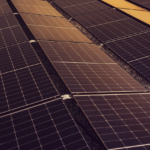
North Americans spend between 15 and 20 hours indoors, according to a study quoted by the New York Post. As a result, architects are putting in more effort to design houses that make it healthy to stay indoors. Interestingly, interior designers have also taken up the obligation of ensuring that the function and aesthetic of the house complements the architectural design.
Interior design entails many things, from form, space, and light to color, texture, and pattern. All these things come together to affect the function and aesthetics of your home. Considering that this the place you come back to after a long day outdoors, there should be a balance between function and aesthetic. However, before we look at how and why you should always strive for a balance between these two design principles, let us first understand what they are.
Decorating your home can be a big part of real estate investing. So whether you’re doing it to spruce up your house or to sell it, here are a few tips.
Function and its role in décor
The functional aspect of a home refers to the form that the house takes. Particularly, this entails the space within the house and the items that fill that space up. Usually, interior designers choose between a natural form and a geometric one. Alternatively, the form could be closed or open. Specifically, the form of the house determines the mood of the space; it could be a relaxed mood if the space is open and has enough light.
Oftentimes, the function of the space determines how space should appear. For example, if you aim to use the space as a busy workplace, you can design the space to appear formal. This means that you will avoid embellishments and anything else that could interfere with your work. A formal mood demands fewer furnishings and enough space to help you to concentrate.
Aesthetics and its role in décor
Aesthetics refer to the visual aspect of your home. This includes the use of art to make your interiors adorable. Particularly, aesthetics enrich the feel of the house, and it improves the mood. However, this becomes unlikeable if you overdo it.
Specifically, aesthetics is more about color as it is about texture and pattern. However, color is the most important because it sets the mood of the house. If you use the wrong color, everything else about the décor is more likely to look tasteless. Usually, the scheme and palate of the color are up to the person who will use the house. In addition, the function of the house determines such things as the intensity and the hue of the color. These two should be just right because they have a psychological effect on the person using the house.
The other aspect of aesthetics is the texture of the interior décor. The texture is simply the feel of the surface of the house. This determines the uniqueness and dimension of the house. Interestingly, the texture of the house could be visual or actual. Whatever form you choose, ensure that the texture blends in with the color and the function of the house.
Balancing function and aesthetic
From the foregoing, the function and aesthetic of the house overlap each other. Additionally, the two aspects of interior décor affect each such that too much of one demeans the uniqueness of the other. For example, if you use too much color, no matter how beautiful it is, it makes the house uncomfortable for formal functions. Such a house will not be comfortable for someone who would like to use it for work.
To arrive at the right balance between function and aesthetic, you need to consider many things. First, how do you want the space to appear (what is the desired mood)? Here, you will be able to decide on the form of the space, whether you want it natural or geometric. Secondly, you need to consider the person who will be using the space. If space belongs to children, you will avoid shiny colors for aesthetics and use washable fabrics for the form. Thirdly, you need to consider the function of the space. Is the space an entertainment unit? If yes, then you need to install comfortable seat floor pillows and perhaps a rocker.
Conclusion
Interior décor requires numerous considerations because it is all about striking the right balance between aesthetics and function. Interestingly, the two aspects of décor affect each other such that the effectiveness of one aspect is the function of the other. To reach the right balance, you need to consider the person using the space; will it be a child? Additionally, you need to consider the function of the space as well as the desired mood. Put together; these considerations will enable you to get the right form as well as the feel of the space.



